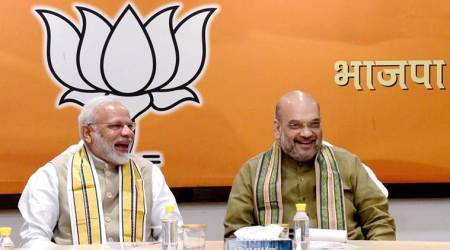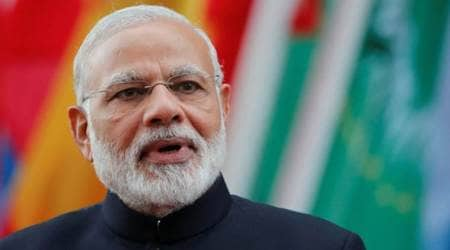 As Keynes said “When facts change I change my opinions. What do you do?” Nitish Kumar would agree. (Source: PTI Photo)
As Keynes said “When facts change I change my opinions. What do you do?” Nitish Kumar would agree. (Source: PTI Photo)
Nitish Kumar’s breakup of the Mahagathbandhan (MGB) has generated an incredible amount of comment in the media. There are attempts to read greater significance in it, to denigrate Nitish Kumar as an opportunist, to decry the state of secular politics and so on. These analyses are based on as short-term a perspective as one is getting used to in the media. If a week is a long time in politics, a year is eternity and totally forgotten. The problem of reading ideological meanings into the move is that the facts will not bear the burden of the analysis.
Let us revert to IBM — India Before Modi. In those obviously safe, secular, liberal, enlightened days (according to the Congress), there was unanimity as to the Idea of India. It was a time of a happy Congress parivar except for the naughty child BJP which had to be constrained. In 1998, the surprise came in the form of the BJP/NDA government with Atal Bihari Vajpayee (just a mukhauta for the sinister ideology behind him) in the lead. Nitish Kumar and the JD(U) were part of the coalition and he was a successful railways minister. (In the spirit of Bihari competition, Lalu succeeded Nitish as a railway minister in the UPA).
After the BJP/NDA went out of power, the JD(U) stuck to its friendship with the BJP, and won the 2005 and 2010 elections. That coalition delivered the most clean and successful regime in Bihar since 1947. Bihar saw law and order restored, growth accelerated and women and girls were placed at the centre. Budgets were as nearly balanced as possible thanks to the genius of Sushil Modi.
It all went awry with the arrival of Narendra Modi as the likely choice of the BJP to be its leader in the forthcoming elections. This was not to everyone’s liking even within the BJP. Nitish Kumar had his differences with Modi but more than that he felt he was senior to Modi in the NDA. While Modi had won thrice in Gujarat, there was the issue of the 2002 riots. Nitish had won two elections and been in the Central Cabinet in the first BJP/ NDA government. It was a status battle. They are both ambitious men and Nitish obviously thought he should have led the coalition in 2014.
Hence the break in 2013. It was not ideological. It was strategic. It was predictable that breaking up would be a mistake as the good governance in Bihar would suffer. But it was to allow himself the freedom to head a new NDA coalition had Modi fallen short and got only 180 seats, as even his own party was hoping. Modi surprised everyone by delivering an outright majority. The BJP/ NDA route was closed to Nitish Kumar if he wanted the highest political job.
He took a gamble in 2015 with the MGB. It was obvious that the alliance with Lalu would not last. The quality of governance delivered by the 2005-2013 government was not matched by the 2015- 2017 coalition. By 2017, it was also clear that an anti-BJP coalition would not work. The proof came in UP elections that Modi would win in 2019. As Keynes said “When facts change I change my opinions. What do you do?” Nitish Kumar would agree.







